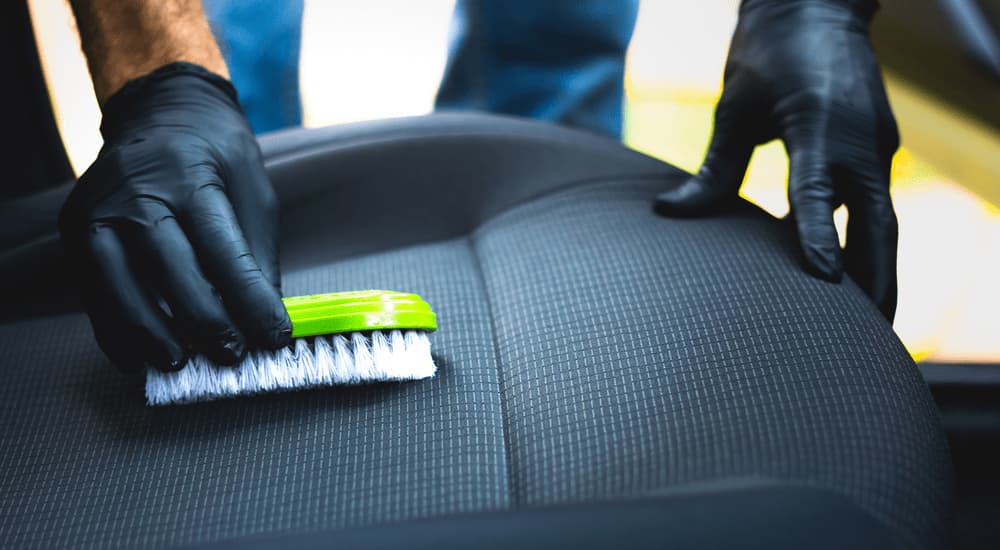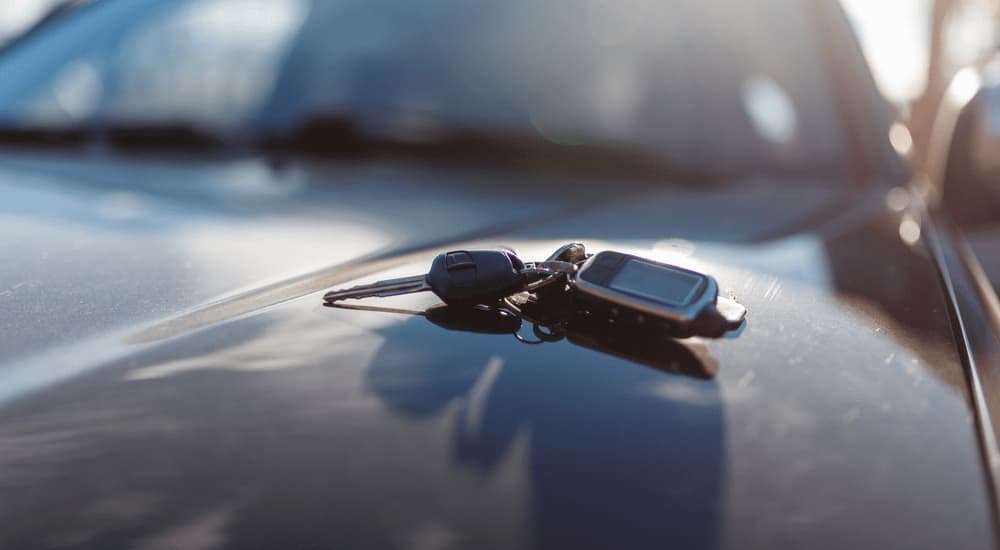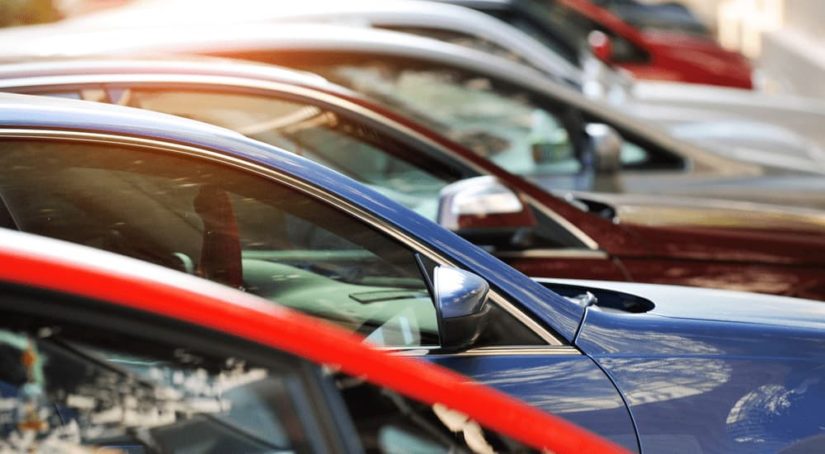As you shop for used models at dealerships or from private sellers, there are many things you need to keep in mind and be wary of. You’ll need to determine which makes and models will work for you, of course, and decide on the capability and features you need. However, there’s more to consider. One of the most important things to be mindful of with a used vehicle is what it went through before you got to it. You’d be surprised how well an unscrupulous car seller can cover severe damage and issues in the hopes that you’ll only discover the problems after the paperwork is signed.
With the massive damage caused by Hurricane Ian at the end of September, numerous vehicles sustained incredible amounts of flood damage. Many of these models will be scrapped, and people will get insurance payouts to help them replace their vehicles, but there will be plenty of cars, trucks, and SUVs that folks will try to sell for a quick buck. One estimate from CarFax is that more than 350,000 vehicles were damaged by floodwaters during Hurricane Ian. As these storms get more frequent and intense, more and more of these hurricane cars will be on the market. Let’s take a look at what to watch for and how to avoid them.
Shop Smart and Trust Your Instincts
In addition to everything else we’ll go over, the most important thing you can do with any vehicle is to shop smart and listen to the voice in your head that tells you when something is wrong. Always do your research and take your time, don’t let someone rush you into buying a car; they want you to make a split-second decision rather than think it over cautiously. For starters, check the Vehicle Identification Number (VIN) of any car you’re interested in buying. Don’t just rely on CarFax or a similar service. Instead, search the VIN using the National Motor Vehicle Title Information System (NMVTIS) and find as much information about the vehicle as possible.
It’s easy to think that we’ve evolved beyond the point of having instincts like other animals, but that’s not true. Listen to your instincts if you’re looking at a vehicle and everything about it seems too good to be true. When something feels off, it usually means that something is off, and you need to be very careful before making a decision. With that in mind, let’s look at some specific ways you can check to see if a vehicle is a hurricane car, even if a seller has tried to hide that fact from you.

How to Check for Flood Damage
Vehicle sellers can be incredibly nefarious in their efforts to hide flood damage, but there are almost always signs they’ll miss. Your job, when looking at a car and ensuring it hasn’t weathered a hurricane, is to try to find any of these signs they overlooked. The best way to do that is to use your senses and be incredibly thorough as you inspect a vehicle to find things they missed while cleaning up and hiding the evidence.
Smell
Flooding creates mold and mildew, both of which give themselves away through odor, so take your time to really smell the inside of a vehicle. Smell the interior cabin, the trunk, and under the hood. If there’s a particularly pungent air freshener, ask yourself what the owner is trying to cover. It can help to sit inside the vehicle, close the windows and doors (get rid of an air freshener if there is one), and give it some good, long sniffs.
Look
There are a lot of visual cues to warn you that a vehicle has been through a flood, though a seller may try to hide many of them. If you notice any water lines or signs of water damage, that’s an obvious indicator. Lift the floormats and look at the upholstery; similarly, pull the seatbelt all the way out and look for a water line, something that’s often overlooked. As you inspect the rear trunk, lift the mat and check the spare tire compartment since this spot will usually fill with water and is frequently forgotten by sellers trying to pull one over on shoppers.
You should also look for any rust in the wheel well or in and around the engine; be thorough and look beyond the surface. While you’re at it, check the vehicle’s fuse box; it’s not a place many sellers will think to look, but it’s a telltale indicator that’s typically damaged and rusty from flooding. Also, take a moment to sniff around and see if you smell any mildew or mustiness.
Feel
Believe it or not, moisture can linger so long in a vehicle that you’ll actually be able to feel it even if the car flooded quite some time ago. As you’re checking things, feel the upholstery and other areas of the vehicle with your hands to ensure you can’t feel moisture still in the car. Carefully feel around the engine too. You might be able to feel rust that you can’t see, which can even flake off in your hand.
Suspicious Refurbishing
While it’s typical for a dealership or private seller to clean a vehicle before showing it to make the best possible first impression, anything beyond that should set off some red flags. For example, if the inside of a vehicle looks pretty worn, but the upholstery and seats are new, you should wonder why they had to be replaced. Similarly, as you’re checking the seatbelt for water damage, pull it out and locate the tag at the end indicating when it was made. Consider it suspicious if you’re looking at a 2017 vehicle with a 2021 seatbelt.
New floor mats in a vehicle aren’t necessarily a red flag since that’s an inexpensive way to make the cabin look refreshed. Anything beyond that, such as the carpets or seats, should look appropriate for the age of the vehicle. You can also check the ignition system and the ignition coils. They usually don’t need to be replaced simultaneously but are often damaged by flooding, so a new set of coils should make you hesitate.

Can a Hurricane Car Be a Good Choice?
If you find yourself looking at a vehicle that’s been through some flood damage, should you consider a hurricane car a non-starter and immediately pass on it? I’d say that you generally should, yes. A vehicle that’s been flooded has severe damage that’s impossible to hide and can potentially cause issues down the road. Rust is a critical problem, as is a compromised electrical system that hasn’t been correctly repaired or replaced. In either case, you’ll have some interesting trips to the mechanic in your future.
That being said, if you’re looking for a car that you can tear down and pretty much fully rebuild, then a hurricane car can be a fantastic option. Whether you like rebuilding and flipping vehicles or want a new project for fun, hurricane cars can be very affordable and a great place to start. Just make sure you’re up to the task and fully prepared for the amount of work you’ll need to do to turn that flood-damaged car into a road-worthy beauty. If you’re not looking for that kind of project, move on and find a vehicle that hasn’t swam in the sparkling waters of the Atlantic Ocean.



